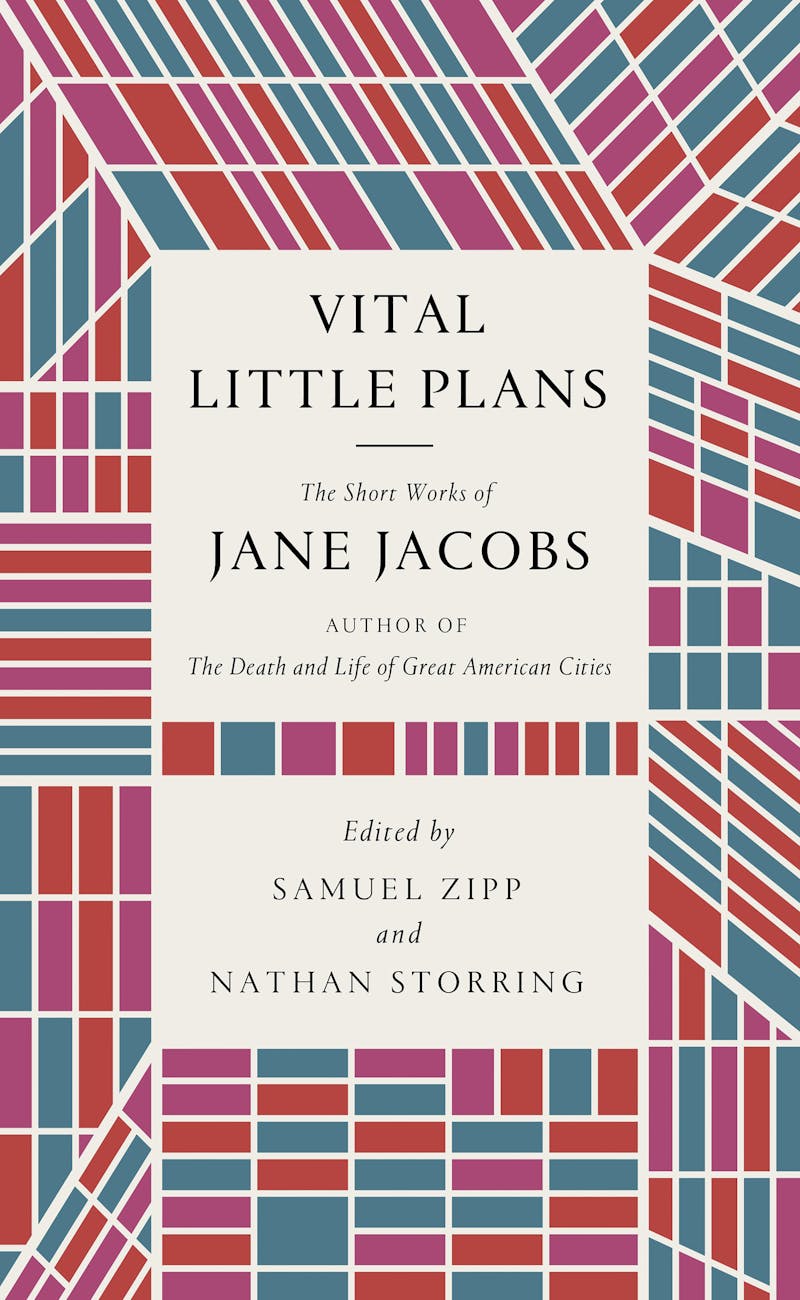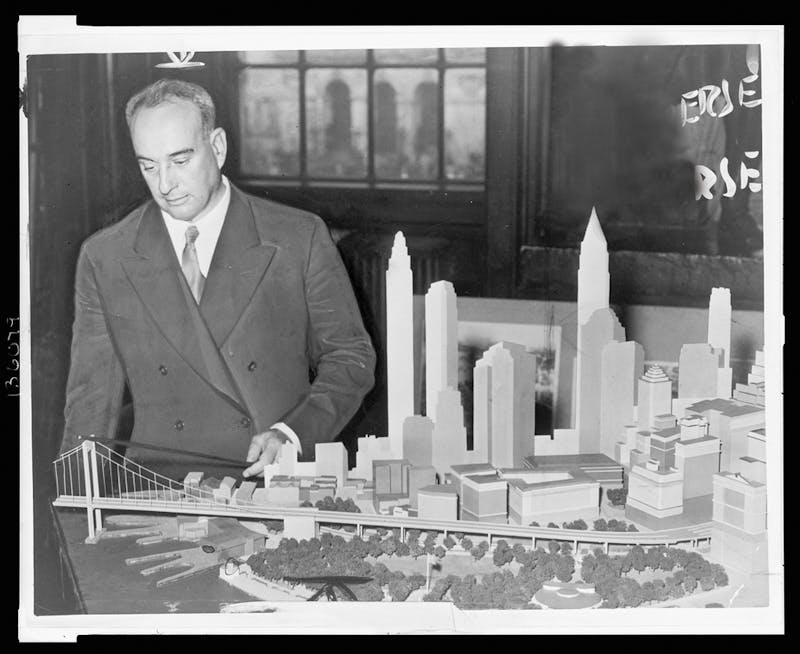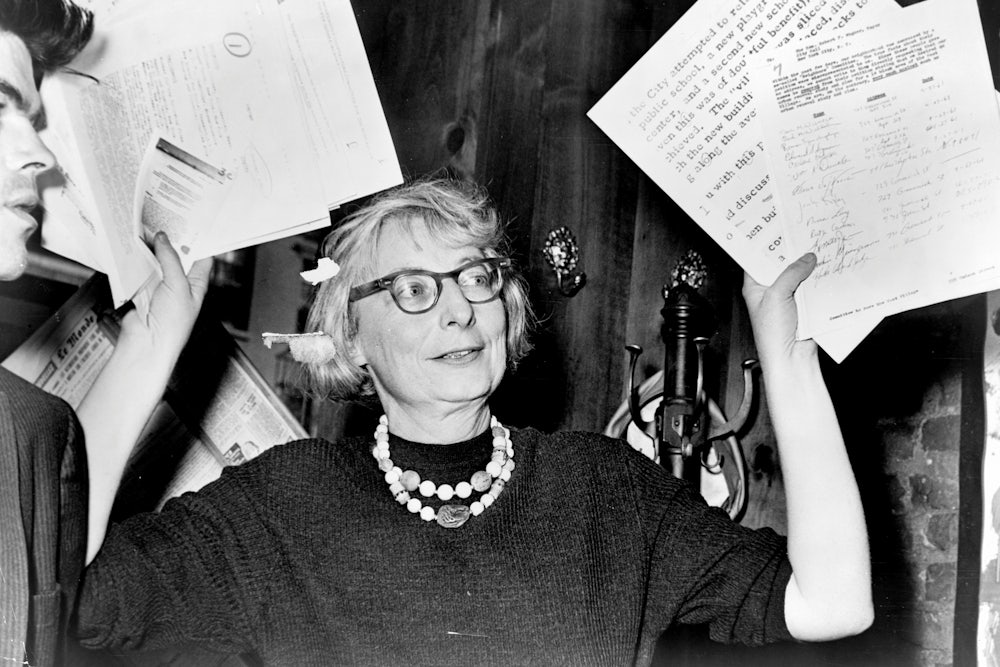The early 1960s was a time of urban utopianism. Not because cities were doing so well, but because architects, city planners, and politicians believed that they had the tools to fix them, radically and permanently. The toolbox included bulldozing entire neighborhoods, building new office towers, and connecting it all with superhighways. These changes, in the name of slum clearance and poverty alleviation, altered the aesthetics of American cities forever. Greater in scope, cost, and idealism than any earlier program of urban revitalization, they also required a much larger role for the federal government.

The writer and activist Jane Jacobs was one of the first people to sound the alarm against the reigning dogma of urban renewal. Her classic work, The Death and Life of Great American Cities, which was published in 1961 and has never gone out of print, begins by announcing an “attack on current city planning and rebuilding.” And attack she did. Jacobs skewered overreaching modernists like the architect Le Corbusier (who once proposed demolishing half of central Paris in the name of renewal), and she took on New York’s infamous urban czar, Robert Moses, when he planned to run a highway through Washington Square Park. “Architecture with a capital A,” she lamented, had created a professional mentality that erased people from the city street.
Jacobs, who lived in a renovated townhouse in the West Village, has long been an idol of bien-pensant urbanites. She challenged the New York power structure in an era before the demolition of Penn Station, when historic preservation was still regarded as misguided slum appreciation. In Death and Life, she advocated for a new kind of urbanism that embraced a human scale and the “ballet” of sidewalk life. But many of her enthusiasts have embraced her with a twinge of apprehension. In the United States, her best-known book electrified conservatives, because it took aim at “big government” from the ultraleft precincts of the West Village intelligentsia. And later in life, Jacobs partnered with libertarians in Canada to privatize the energy industry. Her message of “small is beautiful” can be taken as an expression of her humanism; yet her antigovernment, pro-business stance is more congenial to libertarians than to city-dwelling liberals.
In Vital Little Plans, a new collection of her shorter writings, you can trace Jacobs’s growing appeal to libertarians. Reading some of these essays, it is hard not to feel that they prefigure our own age of radical antigovernment sentiment, when decentralization is invoked as an excuse to do away with all manner of communal programs, from public schools to federal wildlife preserves. It is also easy to see how skepticism toward city planners—and other professional “experts”—can slide into an all-out critique of the professional class and science-based policy interventions. Jane Jacobs’s work once saved our cities. Could it now be used to pull them apart?
Jacobs began writing early, as a precocious cub reporter without a college degree, in her native town of Scranton, Pennsylvania. In her twenties, at the height of the Great Depression, she moved to New York and worked odd jobs. Moonlighting as a journalist in the urban flâneur mode, she dug into the backstories of flower markets and gem sellers. “Orchids in milk-bottles nod at field-flowers in buckets,” she observes at a West Side early-morning flower market, where “greenhouse owners declare they would not sell—at any price—the flowers that grow in their own backyards.”
Her early work exhibits a joyous relationship with city life, familiar to anyone who has moved to Manhattan from somewhere else. Like Joseph Mitchell and Lewis Mumford, Jacobs had the drive of an urban naturalist to describe neighborhoods in pseudo-biological language: Manhole covers were, in her telling, the city’s many “eyes”; a Lower East Side jewelry district became “a glittering island” in the city’s “most squalid section.” But in 1941, after she landed a job at The Iron Age, a trade magazine in the metals industry, Jacobs began to hone a more technical style of writing; she later became a State Department propagandist during World War II and into the Cold War. Both strands of experience inform her style in Death and Life, which is partly why the book had a tremendous impact not just on urban activists, but also on architects and city planners.
For years, however, Jacobs was frequently characterized as a West Village housewife who seemed to have learned a few things from her architect husband. While many acknowledged her keen eye for detail and her great tenacity in civic activism (she was arrested on several occasions), she was continually underestimated as a thinker. Even her admirers spoke of Death and Life as a great piece of commonsense writing—as if anyone with a pen could have observed it from their stoop. Vital Little Plans puts this sexist caricature to rest by showing the impressive range and depth of Jacobs’s work: She published an edited volume on the U.S. Constitution; she reimagined classical economic theory to argue that cities maintain competitiveness; she wrote on Quebecois separatism, as well as Socratic dialogues on moral philosophy; all while raising three children and maintaining a grueling schedule of civic meetings and activist causes.
The book also makes it clear that Jacobs’s outsider status was not just a function of being a woman in a field filled with domineering men like Robert Moses. The kind of noninterventionist urban development she proposes in her short writings is based on the radical idea that cities are formed in small iterations over long periods. Individual preferences come together to form a common good. “Genuine, rich diversity of the built environment is always the product of many, many different minds,” she explained in a speech in 1981. “Diversity is a small-scale phenomenon. It requires collections of little plans.” This idea of “hive mind” urbanism is certainly seductive: Good things happen in small steps. Like liberal economic theory, the vision of an open market in which everyone is an equally powerful actor is compelling. But is it accurate?
After Jacobs finished Death and Life, she locked horns with Robert Moses again, as she aimed to stop the construction of a giant highway through SoHo and Little Italy. Spurred by her frontline activism, she increasingly turned her attention to what kinds of economies cities needed to thrive, a subject that occupied her for the rest of her life. After she and her family moved to Toronto in 1968, where her sons would be exempt from the Vietnam War draft, Jacobs expanded her ideas about self-organization, small business development, and devolving government. She championed small businesses as spaces for spontaneous social life, while recognizing that they suffered from urban planning decisions that favored box stores over bodegas and malls over thrift shops. These ideas fed into her second major book, The Economy of Cities, published in 1969.
Jacobs’s work on urban economies, which she expanded in the ’80s, tends to reflect skepticism about the federal government’s role in the economy, rather than about the economy itself. At the time, many of her urbanist peers—including Marshall Berman and David Harvey—were beginning to publish works critical of how capitalism reshapes cities. But Jacobs was a firm believer in the free market: She liked the idea that market interactions build trust and create social bonds that extend beyond their temporary utility. Rather than finding fault with big business, she criticized the government’s role in urban affairs, which she felt had morphed from well-meaning paternalism to a wild experiment in social engineering, involving the physical eradication of neighborhoods that took generations to build.

This pro-business, antigovernment position was new for Jacobs. In many of her early essays, she grappled with the contradiction between her support for the basic ideas behind neighborhood revitalization and public housing, and her outrage over the devastating results. The editors of Vital Little Plans—Samuel Zipp and Nathan Storring—show how her dislike for federal governments (in both Canada and the United States) was shaped by the historical moment of the post–Vietnam War era. She saw similarities between the overreach of federal urban renewal and the hubris of military intervention in Southeast Asia—both of them driven by an emerging class of “systems analysts,” and both colossal failures that destroyed lives.
In many cases, Jacobs’s palpable aversion to federal intervention was based on the evidence all around her in New York City. She was concerned for the happiness of people who had to live in soulless, cookie-cutter developments designed by master planners. This included not only middle-class residents of places like New York’s Stuyvesant Town (built for World War II veterans and home to Jacobs’s sister and her family), but, particularly, the urban poor destined to reside in towers of concentrated poverty like Chicago’s Cabrini-Green. As Jacobs warned in 1958, with her usual prescience: “We are going to have an urban monster that never was—a pseudo-city composed of economically segregated islands, with dreadful and endless social consequences.”
By the 1980s, however, Jacobs had come to believe that the trouble with public housing projects was that they were federally funded. The money to build and maintain them came not from the community through local taxes, but from on high, creating a kind of disincentive for the community to work for its own health. In a 1984 speech, she extolled the virtues of self-reliance, arguing that people become “stunted and unresourceful” when they do not have to support themselves. Likewise she saw a connection “between the fact that as much as 90 percent of a city’s public income today can arrive in the form of grants” and “the fact that cities today have been losing inventiveness at overcoming serious public problems.”
For Jacobs, decentralization was a means to wrestle back community control. This view, of course, fails to take into account the ways that the federal government used power for the common good, from New Deal and Great Society programs that addressed urban poverty—with a budget only the national government could provide—to school desegregation, a task that many localities, from Birmingham to Boston, refused to enact themselves. What’s more, the idea that neighborhood power is preferable to federal intervention rests on an unstated presumption that every locality has residents like Jane Jacobs, endowed with the free time, knowledge, and extensive organizing credentials to devote to radical experiments in local government.
Jacobs’s work, for all its oversights, was a singularly accurate prediction of the future we live in. Although she disliked many aspects of new urbanism, she was the patron saint of walkability, density, and mixed commercial and residential communities. She also foresaw the economic power of small businesses to revitalize neighborhoods and invigorate street life: Think of the hipster café, vintage store, and artisanal cheese shop economy.
As Zipp and Storring make clear, however, the great, unaddressed subject in Jacobs’s best-known work is gentrification. Specifically: Did her work, in part, serve as an economic and philosophical rationale for the wave of bohemian gentrification that overtook the West Village? If so, it would give new meaning to her much-lauded appreciation of street life: We would have to read Death and Life as the document of a neighborhood going through extreme economic change, with results that inevitably pushed some residents out. The West Village is one of the most expensive neighborhoods in the United States today.
Jacobs only began to discuss gentrification at the end of her life. She never saw it as an issue that could be fully corrected through housing subsidies or rent control. Instead, she largely believed that the market would sort things out. If urban renewal had never occurred, she argued, there would now be a lot more appealing housing stock to gentrify, and so fewer current residents would be displaced. When gentrification moved too fast in a neighborhood, she recommended that some “moderate gentrification” be encouraged “to take the heat off.” For Jacobs, growth was often a better solution than regulation.
Jacobs was slow to consider whether the organized chaos of the West Village’s “sidewalk ballet” could be replicated in, say, Flint, Michigan, or the South Side of Chicago. Some places, in fact, are affected by sprawl to the point that street life is already impossible. Other neighborhoods are so cursed with poverty and violence that there is nothing romantic about disorderly, crowded streets. This is not to say that strong community cannot exist and thrive in high-crime, low-income neighborhoods. These neighborhoods are certainly better off with abundant street life, but what they truly need often comes from federal jobs programs, laws that prohibit housing discrimination or predatory landlords, and reform of policing tactics.
Reading Jacobs’s essays, it’s clear she arrived at the idea that small businesses and individual choices are best for everyone everywhere through her own, local experiences, particularly of postwar New York. One of the virtues of reading a wider range of her writings is that she turns her ever-observant eye on Toronto, Philadelphia, and other places that are perhaps more representative of North American cities. While her thinking has sometimes served as fodder for a hands-off approach to city planning and the privatization of public resources, she approached these issues as a free-market realist, not a laissez-faire fundamentalist. As she explained in 1952 in a letter to her employer, the State Department, during their investigation of her as a suspected Communist sympathizer (she was not):
I was brought up to believe that there is no virtue in conforming meekly to the dominant opinion of the moment. I was encouraged to believe that simple conformity results in stagnation for a society, and that American progress has been largely owing to the opportunity for experimentation, the leeway given initiative, and to a gusto and a freedom for chewing over ideas.
